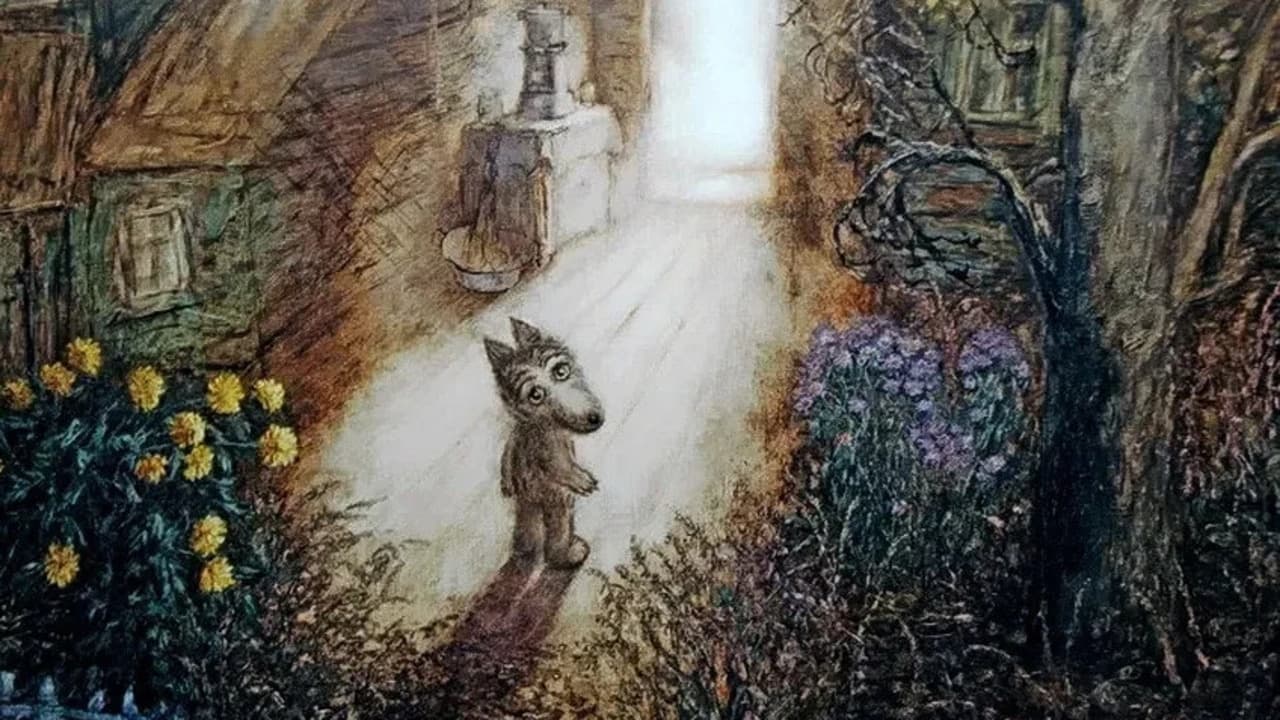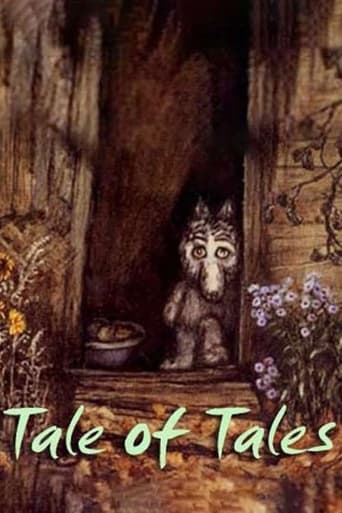

Highly Overrated But Still Good
... View MoreClever and entertaining enough to recommend even to members of the 1%
... View MoreIf you're interested in the topic at hand, you should just watch it and judge yourself because the reviews have gone very biased by people that didn't even watch it and just hate (or love) the creator. I liked it, it was well written, narrated, and directed and it was about a topic that interests me.
... View MoreThis is one of the best movies I’ve seen in a very long time. You have to go and see this on the big screen.
... View MoreI have to say I am pretty shocked to see this half-hour animated short film by director and writer Yuriy Norshteyn receive such favorable reviews and rating. I guess this is mostly because of the film's style. Everything about is is so Soviet from start to finish: the animation, the music and probably also the story. Still I have to say I did not find it memorable at all. It looks much older than it actually is (35 years old) and yes, in this case, it is a negative aspect. The only positive thing about it is that there is no spoken dialog in there, so people from all over the world can enjoy it without subtitles, even if they do not speak Russian. But I don't think they want to. This film is really only for a very small group of film lovers, not for broad masses. And I do not belong to this group. Not recommended and "Tale of Tales" is also a pretty pretentious title that sounds full of itself.
... View MoreNot much to add really to what's already been said before, and so well too. Tale of Tales is one of the finest Soviet animations ever made alongside Hedgehog in the Fog, and one of the most powerful and poignant of the entire animation medium too. The visuals are really striking, atmospherically coloured and impeccably detailed, several of the images are enough to stay with you forever and the symbolic ones are really quite meaningful. Tale of Tales is scored wonderfully too, all of it fits with the visuals like strawberries and cream whether ethereally beautiful in the retrospective moments or hauntingly rousing in the war/battle images. The story and atmosphere are rendered adeptly, the story is structured into three sections, each of them is firmly focused and full of emotional impact and they follow and overlap one another with no signs of jarring or clumsiness. The retrospective moments are nostalgic and poignant, the middle section is just gut-wrenching and the idealism of the final section shows some hope, contrasting beautifully with what's been seen before. Tale of Tales is well-paced, it allows the visuals to breathe and resonate nor does it descend into tedium, and the powerful, affecting and nostalgic atmosphere is incredibly well-done. To conclude, a fine example of a Soviet animation masterpiece and one of the finest examples too. 10/10 Bethany Cox
... View MoreSeems that my comment is the first one with some negative words. Yes, I dislike this animation film. It's long, it's dark, and it's monotonous. This film doesn't make me experience any strong emotions but just makes me drowsy. If I had to name the best animation film ever, I would pick up "Hadashi no Gen" (1983). That one really gave me unforgettable emotions. As to this black-and-white sequence, even though it does have genuinely artistic sketches, it is a kind of underground animation for artists themselves. It retells the history of the XX century of our country before and after the "VOV". I find the representation of the happenings too unimpressive and common. In general the artwork is not beautiful. The classical music can be listened without these crude images.If you think that I'm absolutely unprepared for this kind of "rough" animation, it's not true. One of my favourite cartoons is about Alisa, which is also very "unpolished".The best cartoon by Mr Yuriy Norshteyn is "Yozhik v tumane" (1975), in my humble opinion. That one is simple and excellent while this one is complex, awkward, and unpleasant. I also find the name of this cartoon quite misleading. It is really a bold title, which is not backed up by anything truly impressive. And I don't want to come back to this animation film again re-watching it is an artistic torture to me.When I have more time, I shall add a few more lines here.But I do respect the unique structure of the film and it does have a couple of cute sequences - therefore I give it a 5 out of 10, which is not a bad mark after all. Thanks for attention.
... View MoreThe human memory does not operate in a straightforward, linear manner. We do not remember events in neat chronological order, nor do we always immediately understand the meaning behind what we are seeing. Our memories are a jumble of seemingly-random but ultimately connected images, sporadically jumping between remembered places and moments, associations triggered by the repeated appearance of deceptively mundane but eerily familiar objects. There is much to be learned from exploring the unfathomable depths of the mind, and Russian animator Yuriy Norshteyn's 'Tale of Tales' strives to do exactly that.In 1984, in an event held in conjunction with the Los Angeles Olympics, the Animation Olympiad jury attempted to recognise the single greatest animated film of all time. Despite a wealth of worthy candidates, one film was ultimately crowned with the grand title: that film, of course, was 'Tale of Tales.' Two decades later, at the 2002 Zagreb World Festival of Animated Films, the same film was honoured with the same prestigious title, confirming beyond doubt that time has done nothing to dampen its beauty. Norshteyn's masterpiece is a triumph of stunning animation, ambient sound and a stirring classical score. Despite being held in such high regard by so many animation experts, I was surprised to discover how rare and under-seen this film actually is. Only via the internet was I able to watch it, and my hearing about it in the first place can be put down to blind luck. Needless to say, I am infinitely grateful that I did stumble upon the film one day.'Tales of Tales' is comprised of a number of related sequences, which are interspersed within each other. The film uses several recurring characters, most notably the poet, the little girl playing jump-rope with the disheartened bull, the young boy feeding apples to the crows, the dancers and the soldiers, the suckling baby and, of course, the little grey wolf (voiced by Aleksandr Kalyagin). The meanings behind the film's poignant images are somewhat beyond words, and, even if you have absolutely no desire to try and decipher the rich symbolism, you can still simply sit back and take in the awesome beauty. The sequences involving the dancers are most certainly an allegory for Russia's involvement in World War Two. The vanishing male dance partners, replaced by hooded Grim Reapers who retreat solemnly into the distance, highlight the enormous human losses the Soviet Union suffered on the Eastern Front.The original title of the short, 'The Little Grey Wolf Will Come,' was derived from a traditional Russian lullaby, which is featured in the film in both instrumental and vocal form: "Baby, baby, rock-a-bye / On the edge you mustn't lie / Or the little grey wolf will come / And will nip you on the tum / Tug you off into the wood / Underneath the willow-root." This title, however, was ultimately rejected by the Soviet censors, and Norshteyn was forced to choose another one. He eventually decided upon 'Tale of Tales,' the title of a poem by Turkish poet Nazim Hikmet, of which the director had been a fan since 1962: "We stand above the water - sun, cat, plane tree (platanus tree), me / and our destiny. / The water is cool, / The plane tree is tall, / The sun is shining, / The cat is dozing, / I write verses. / Thank God, we live!" The film employs an original music score by Mikhail Meyerovich, supplementing his contributions with the classic works of Bach, Mozart and the World War Two era tango, 'Weary Sun,' written by Jerzy Petersburski.Curiously, 'Tale of Tales' completed in 1979 is the most recent film directed by Yuriy Norshteyn. This, however, does not mean that he has not been working hard. Ever since 1981, the director has dedicated most of his time to producing 'Shinel / The Overcoat,' his 60-minute labour of love, adapted from Nikolai Gogol's short story of the same name. Throughout a production period plagued with interruptions and financial difficulties, Norshteyn's ardent perfectionism has earned him the nickname, "The Golden Snail." A release date for 'The Overcoat' is currently uncertain, but, if the magnificent 'Tale of Tales' is anything to go by, we are all in for a treat!
... View More